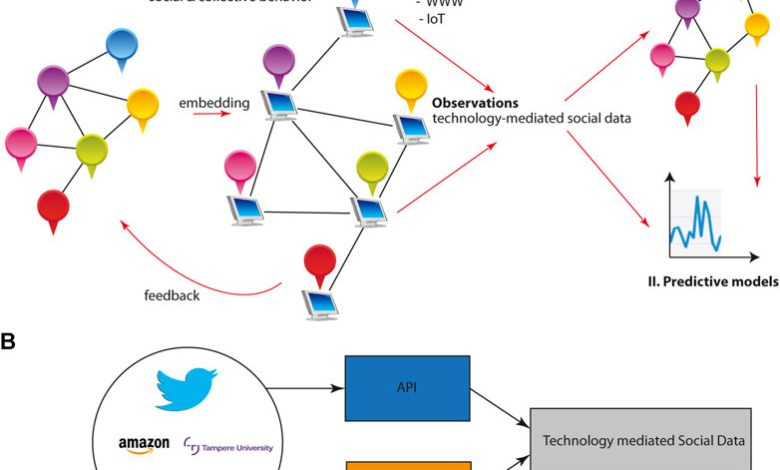The sly study of Social A/B testing: How thinking Bayesian brings the snaps

The sly study of Social A/B testing: How thinking Bayesian brings the snaps
It’s more straightforward to make sense of social A/B testing utilizing this similarity:
Imagine you’ve never seen a canine. (Work with me here.) (Buy Instagram Followers UK)You’re remaining on your #1 walkway and see one go by.
What’s more, it’s pink. Given having no earlier information on what canines should resemble, you probably now accept that all dogs are pink. How unusual.
Then you see a subsequent canine go by, and it’s dark.
With this new information, you currently consider that half of the dogs are pink and half are dark.
You have no chance of knowing now that a pink canine is an anomaly, something you may at no point finds in the future.
We should take it back to the real world. You realize what canines resemble.
When you see a pink puppy, you quickly remember it as surprising, unimaginable without color.
Nonetheless, you may now permit that some minor level of canines is pink.
Congrats, you’ve applied Bayesian reasoning to the shade of dogs!
What does this have to do with A/B testing?
However straightforward as it seems to be for us to perceive exceptions in the shade of canines.
It’s harder to apply this thinking while seeing changes, snaps, or commitment. We should accept a model.
Rather than remaining on the walkway getting a charge out of outside air, you’re currently sitting at your work area, noticing your most recent A/B test outcomes.
You see that variety 1 of your test has a good 5% active clicking factor, and variety 2 looks shockingly better at 26%.
You applaud yourself for observing the feature that will draw in 400% better!
“Be that as it may, pause,” I hear you say. “A 26% active clicking factor?
That definite resembles a pink canine.”
And for sure, it likely is. You’ve currently applied Bayesian reasoning to A/B testing, and like this, you’ve prevented yourself from sending that @channel Slack message broadcasting your A/B testing ability.
All things being equal, you’ll initially apply thorough investigation to your outcomes.
This is the way to make it happen.
Our objective
We should make this somewhat more concrete. We’ll utilize a certifiable model graciousness of our distributing accomplices’ Social A/B Tool to run A/B tests. This specific client needs to test the presentation duplicate of a Facebook post. Here are the varieties:
Variety 1:
“Follow Mikey Rencz, Mikkel Bang, and Mark Sollors around in episode three of Burton Presents. Watch Below.”
Variety 2:
“The existence of a Burton star.”
We need to realize which of these two posts will perform best on Facebook and how much.
We’ll present every minor departure from a bit of delegate test of the distributer’s crowd and track every variety’s presentation over the long run.
Luckily, Social A/B computerizes this cycle for you. After some time (typically a couple of moments), we’ll get information from Facebook.
That is the point at which the genuine tomfoolery begins.
The credulous way to deal with A/B test result examination
The simplest method for computing the execution of a post is the accompanying:
Get the snaps and reach for every variety
Partition clicks by reach to help the active visitor clicking percentage (CTR)
Work out how much preferable one is over the other
More advanced analyzers will utilize an example size mini-computer to approve that the example is sufficiently huge to be huge.
This is a fundamental advance. Be that as it may, we don’t trust adequately it’s. Here’s the reason…
Suppose that after uncovering the two varieties to a delegate test crowd for 20 minutes, we get these outcomes:
Variety 1: 46 ticks, 866 impressions = 5.3% CTR
Variety 2: 8 ticks, 676 impressions = 1.2% CTR
Variety 1 beat variety 2 in this model by 340%. Genuine?
A fast chi-squared test approves that we have to frame an end, as we’re feeling certain.
However, presently how about we give it the pink canine test.
When’s the last time you had a post-roll with more than 5% active clicking factor? Never?
Is this post letting it be known, or about the white and gold dress? No?
Note: socialfollowerspro
Is it a tale about pink canines? Maybe the active visitor clicking percentage merits another look.
This approach disregards the truth of what, for the most part, occurs on your posts, opening the entryway for ridiculously erroneous suppositions.
It might, in any case, precisely foresee the better variety, yet how much better?
Assuming variety 1 got 46 ticks on 866 impressions, will it genuinely get 460 on 8,660 images?
It’s conceivable; however, while framing a significant publication choice and guaranteeing A/B testing triumphs.
It’s wiser to air in favor of careful positive thinking than confident abundance.
So how about we utilize similar information? However, consider our earlier report.
The Bayesian methodology
When you perceived the pink canine as an irregularity, you did as such in light of your earlier information (or conviction) about the standard shade of canines.
You added this new item (a solitary pink canine) as far as anyone is concerned, making it the recent earlier conviction for your future self. This is the central idea of Bayesian reasoning.
Furthermore, it’s what we want to do while breaking down test results. Why?
Since you have a massive load of information about how your substance and crowd typically perform.
There’s no great explanation to overlook that information while foreseeing future execution.
The preliminary test we face is to measure our earlier conviction about Facebook post-execution. This numerical earlier conviction needs to address two things.
Your typical active clicking factor
The average difference of navigating rates between posts
For the distributer in our model, most Facebook posts see somewhere in the range of 1% and 2% active clicking factor, absent a lot of difference.
We could address this as a mean and a standard deviation.
However, more valuable for the computations we want to make is to address the information as alpha (α) and beta (β) boundaries. Start enchantment.
The α and β for this distributer are 12.92 and 842.22, separately.
We’ll examine how these are determined on a stormy day.
For the time being, realize that they address the average active visitor clicking percentage of a post and that their extent is contrarily associated with the navigate rates’ change.
Note: http://articlemug.com/



